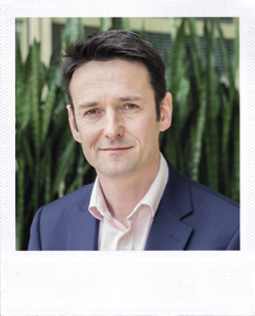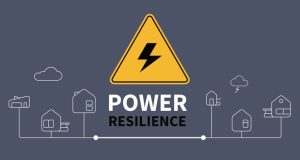
PETER NISBET,
MANAGING DIRECTOR OF MITIE ENERGY
We’ve all seen reports in recent months highlighting the positive side-effects that lockdown restrictions have had on our environment. Fish swimming in the canals of Venice and pollution-free skies in Central London, come to mind. This has been reflected in our work with customers. By creating tailored building hibernation plans, we’ve seen energy consumption reach lows that have never been achieved before, even during bank holiday shutdowns.
However, experts across the board agree that these recent improvements are temporary. Ambitious sustainability targets set by businesses pre-coronavirus are here to stay, so companies mustn’t be lulled into thinking that they can sleepwalk into meeting these audacious, and important, goals. Companies currently considering their back to business plans need to ensure they’re embedding environmental commitments into them from the outset. In short, committing to a ‘green recovery’.
There are three key stages to this. Firstly, setting a clear strategy. Many businesses are transforming how they use buildings for the foreseeable future, so it’s important to revisit existing net zero carbon strategies and consider how they may need adapting. Using data from the lockdown period can help identify opportunities to reduce energy and carbon use, which will also save costs – something which is high on the agenda for many in the current environment.
The next step is to use this strategy to maximise energy savings throughout the business. This can be kickstarted by reconfiguring the building management system (BMS) to suit new occupancy levels, for example when operating on only selected floors or if the building’s opening times have changed. Ensuring the BMS is connected to the cloud allows these changes to be made and any problems fixed remotely, which is much quicker, and potentially safer, than sending an engineer to site.
For those that are serious about reducing their impact on the planet, switching to renewable energy sources is key. In fact, in May Mitie announced it was joining the RE100 initiative, having already switched all our sites to 100% renewable electricity. With prices at a record low, now is the time to get a great deal on a long-term renewable energy contract.
As the BMS highlights, technology is the best way to optimise energy reduction. Not only does it enable businesses to optimise assets, it also provides data which can support decision making – for example, which buildings to keep open or closed.
Connected workspace sensors are also very effective. In our own head office in The Shard, we have sensors installed all over the site – to monitor hot desk and meeting room occupancy, temperature and air quality. In the ‘new normal’ these will not only support social distancing, but by feeding data into the BMS in real-time, HVAC systems and thermostats can be controlled accordingly.
The final step is to prepare for the future. Businesses that have re-evaluated their net zero strategy and invested in technology will be more agile, responding quickly to future challenges such as changes to the nation’s lockdown status. Thinking beyond COVID-19, it’s also important to start planning for the bigger picture now – whether that be building an electric vehicle fleet or slashing supply chain emissions.
Whilst we may never return to exactly what was once business as usual, there is an opportunity to influence how we bake sustainability in to our ‘new normal’ by including it from the outset. By taking these green steps, businesses can ensure their environmental targets remain on track.

CHRIS HAVERS,
PROGRAMME DIRECTOR OF THE SUSTAINABLE FACILITIES MANAGEMENT INDEX
So long as there are fewer people in buildings, logic suggests that energy, waste and water consumption are likely to remain lower than usual. However, framing the impact of social distancing on sustainability targets in this way ignores the bigger picture. It should also make us question what we mean when we say, ‘business as usual’.
Lower occupancy rates should lead to a reduction in direct consumption on-site. But any organisation that changes its business model to incorporate a bigger share of home working risks transferring consumption rather than removing it. When a company moves its data centre from its facility to the cloud, it shifts its emissions to the new host. Similarly, moving to a home working model will transfer energy consumption to the employee. It shifts the organisation’s emissions accounting from direct scope 1 impact to indirect scope 3 impact.
That said, the broader findings from the research in question suggest that lockdown has not produced the results that we might expect. The average reduction in energy across the 300 buildings included in the study was just 16 per cent. One explanation for this is that many building operations are pre-set and will not change according to use or occupancy.
As a result, facilities managers need to understand how their building has performed during the lockdown. They should find out how many people occupied the building as well as the daily consumption of the space. Doing so will help them determine whether their building operations are pre-set or tied to factors such as occupancy.
If they are pre-set, facilities managers should identify what changes need to occur to accommodate fluctuating demand. Possible measures include building in start and stop times for assets and systems, managing HVAC settings and lighting levels, and unplugging items that will be left unused. FM departments will also need to reappraise their FM agreements to enable these changes.
Facilities managers have the opportunity to drive operational and sustainable strategy at a time when organisations are looking for leadership. For the businesses that adopt home-working, FMs should consider the impact that remote workers have on areas such as energy consumption and look to instigate real behavioural change. Likewise, in the workplace, FMs will need to ensure that building operations align with use, occupancy and behaviours, and engage with landlords and employees to make it work. The alternative is that 2020 becomes an anomaly and everything returns to ‘business as usual’.





